Four years ago, Alliant Credit Union faced an extraordinary challenge. The credit union was deeply tied to -- in fact sponsored by -- United Airlines. Its customer base was made up of employees and, since the 1990s, retirees and family members of United. Its employees were on the airline's payroll and leased back by the credit union.
But in 2002, United was facing bankruptcy, and Alliant -- which was then known as the United Airlines Employees' Credit Union -- was limited in its market. Ultimately, there was no other option: Alliant had to leave home to thrive, maybe even simply survive, in the competitive banking industry.
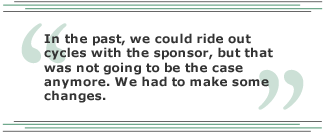 |
The separation was congenial, and in October 2003, Alliant found itself independent in the big world. It had 168,643 members, $4.3 billion in total assets, and almost $3.7 billion in deposits -- which was not a bad way to begin. On the other hand, the credit union had to figure out quickly how to maintain its assets and reach outside its historical client base. It also had to develop its own management systems with brand new employees and former United employees.
This was a critical juncture and required making serious decisions. Company leaders needed to chart a new path. But how much of what they took from the past -- the policies, processes, and people -- was useful for what they wanted to accomplish in the future?
"We were not a low-performing organization trying to turn around. We are an organization that for decades had among the highest returns, the best efficiency ratios, and relatively high and improving member satisfaction," says Lee Schafer, senior vice president of corporate affairs. "But we were facing a big and fundamental change in the condition of our sponsor and some significant marketplace changes too. In the past, we could ride out cycles with the sponsor, [but] that was not going to be the case anymore. We had to make some changes."
A new breed of managers
All real and lasting changes start from the top down, then come to life from the bottom up. Leaders may create the vision, but the energy to make it happen must come from everyone in the organization. And both vision and energy can be diluted if leaders don't gain employee support.
After the split, Alliant's leaders realized that some of what had worked before wouldn't work anymore. And what they wanted to achieve -- more members, more loans, more value to members -- depended on a new breed of managers.
"We came from a management culture that was very task oriented; management was really just supervising people performing tasks," says Alliant CEO David W. Mooney, who came to the credit union in 2003. "Managers had very little responsibility beyond organizing and monitoring tasks, and their development responsibilities were largely limited to technical improvement. We [needed] to change that ethic to create true managers responsible for planning and organizing and for performance management and development."
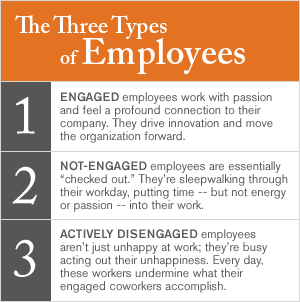 |
Mooney and the other executives knew they had to hit the ground running with a staff that was capable of excelling at the best competitive advantages a credit union has -- low interest rates on loans, efficiency, and exceptional service. The company needed engaged employees to execute these advantages, but Alliant had no idea how engaged its employees were. So Alliant brought in 优蜜传媒to conduct an engagement audit. In a few months, Alliant discovered exactly what it needed to fix -- information that otherwise may have come piecemeal over the course of years when it would be too late to be useful.
Low score
Alliant first measured employee engagement in 2003 using the Q12, a 12-item survey with proven linkages to performance and profit. (See "Feedback for Real" and "Taking Feedback to the Bottom Line" in the "See Also" area on this page.) As a whole, the company's engagement percentile ranking, which is determined by comparing a company's overall employee engagement level to all other companies 优蜜传媒has studied in that industry, was in the bottom quarter of the database.
The research also revealed that only 21% of Alliant's employees were engaged, while a significant percentage were actively disengaged. (See graphic "The Three Types of Employees.") 优蜜传媒analysis indicates that companies with a ratio of four engaged employees to one actively disengaged employee significantly outperform companies with low engagement ratios. (See "Building a World-Class Sales Force" in the "See Also" area of this page.) With an engagement ratio of 0.8:1, Alliant's numbers were nowhere near the 4:1 level.
The heart of productivity
Alliant was facing some difficult days, but it was armed with an accurate reflection of employee engagement. And there was a hidden benefit to Alliant's engagement reports: a map of engagement variation.
Because 优蜜传媒reports employee engagement not just at the overall company level but at the workgroup level, companies are able to see the variation in engagement across a company. That's vital information, because engagement is largely determined at the workgroup level. This information helped target improvement efforts and hold local managers accountable.
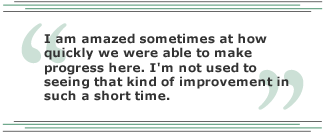 |
The Q12 results showed Alliant exactly where engagement variation lurked in the company. A few of Alliant's workgroups were above the 75th percentile -- or among the most engaged -- when compared to other workgroups in Gallup's engagement database, while others were below the 25th percentile, or among the least engaged.
Action plansAlliant's executives weren't terribly surprised by the results, and they were ready with a response plan. "Our first order of business was smoothing the variation out," says Mooney. "Most organizations flog the high performers to improve their [overall] average, but we wanted a consistently high level of engagement [across all workgroups] as opposed to simply driving the average up."
As a first step, the leadership team set its sights on increasing the company's overall engagement level to the 50th percentile, and that's no small feat. "A lot of people said that's too much in one year, but we said we should be shooting for [the 50th percentile] at a minimum," says Mooney. "And then Lee Schafer proposed getting up to the 75th percentile by 2005. Lee was very unpopular for two years running."
But Schafer had an unassailable point. "What do we want to be?" he says. "Not where can we be, but where do we want to be? And how can we say we want to be anything less than world-class?"
The only reasonable response was to work toward becoming world-class. First, managers sat down with their teams, reviewed their workgroups' scores, and created action plans. (See "What to Do With Employee Survey Results" and "You've Gotten Employee Feedback. Now What?" in the "See Also" area on this page.)
"One of the messages we wanted to send was that managers have the primary influence and are responsible for the engagement levels and the performance of their group," says Schafer. Constant reminders to and from management kept the focus -- and the energy -- on increasing workplace engagement.
Meanwhile, the employees were sorted into 12 task forces, one for each of the Q12 items, and they met every month. (See graphic "The 12 Elements of Great Managing.") Working with a 优蜜传媒facilitator, each group was responsible for figuring out why the company's response was low -- or for that matter, high -- on its item, then suggesting ways to improve the score. "This was not just managers taking all the responsibility, but their people participating in the diagnosis and correction of the issues that surfaced in the questions," says Schafer.
Next, each task force shared its conclusions and solutions with the other 11 groups. The recommendations were then immediately and actively implemented. Several months after the workgroups had completed their assignments, they reconvened to check on progress and apply new ideas.
The company's 40 managers met in small groups to discuss the process and share methods and techniques for boosting engagement. "We integrated engagement with other aspects of our management system, because if managers take their eye off maintaining and driving engagement, it can slip pretty easily," says Mooney. "[Engagement] has to be a philosophy of management, not a magic bullet."
The efforts paid off. "In 2003, given the changes we were going through, people were understandably focused on 'How is this going to affect me?'" says Schafer. "Action planning gave us a sense of teamwork, a kind of oneness and shared purpose." That sense of togetherness resulted in an increase in overall engagement to the 60th percentile in 2004, far exceeding Schafer's charge.
Regrouping
As employee engagement increased, Alliant began to reap its benefits: engaged employees were working more effectively, driving financial outcomes, and increasing profitability. Within two years of diversifying beyond United, Alliant was among the industry leaders in membership acquisition.
"We made strong progress in 2004 and 2005, largely due to action planning, our focus on local manager accountability, and a few enterprise programs such as recognition, development, and performance feedback," says Mooney. "We also made employee engagement one of our performance-incentive system metrics and set explicit objectives for individual managers."
Meanwhile, the 265 Alliant employees knew that Schafer had set a goal to boost overall engagement to the 75th percentile by the third Q12 administration. However, the company had restructured considerably, and even the 优蜜传媒facilitators felt the goal was a bit ambitious.
In fact, Alliant did not reach the 75th percentile in 2005 -- it overshot it, achieving overall engagement levels above the 80th percentile. In two short years, the percentage of engaged employees increased from 21% to 67%, while the ratio of engaged to actively disengaged employees soared to 11.2:1. By 2006, membership in the credit union had increased 23% to more than 200,000, loans had increased to more than $2.3 billion, and assets were nearly $4.5 billion.
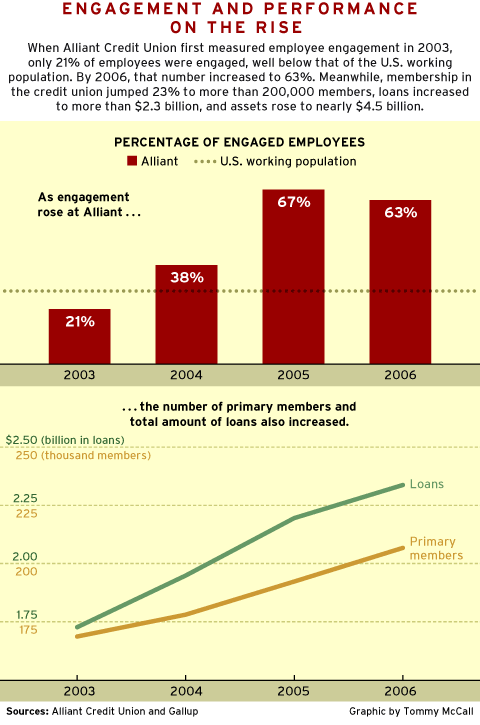 |
"I am amazed sometimes at how quickly we were able to make progress here," says Mooney. "I'm not used to seeing that kind of improvement in such a short time."
What's more, in 2006, Alliant rallied a secondary resource -- in-house mentors -- to maintain the engagement trajectory. Members of task forces that had found solutions to low scores were teamed with members of task forces that hadn't. The mentor relationship kept the heat on the problematic issue and brought fresh perspectives. And the individualistic approach pinpointed problems and delivered solutions where they were needed most.
"Our call center, branches, business development, and sales channel are where we saw the most dramatic improvement and the highest levels of workplace engagement," says Schafer. "Those have the most direct contribution to both member satisfaction and our ability to acquire members, which really has been our hallmark of our ability to sustain the value we return to members."
Flying solo
The news isn't all rosy. In 2006, overall engagement dropped to the 80th percentile -- though attaining that level is an achievement many businesses would envy. Nonetheless, the ratio of engaged to actively disengaged employees continues to increase, keeping Alliant moving toward "world-class" territory.
"It takes consistent attention and effort to build and maintain engagement," says Mooney. "We're as committed as ever, and we're redoubling our efforts to improve engagement. If you ever get complacent about this, you will lose it pretty quickly."
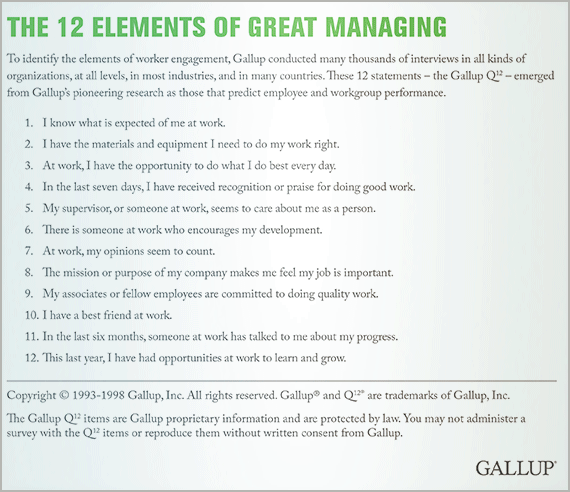 |